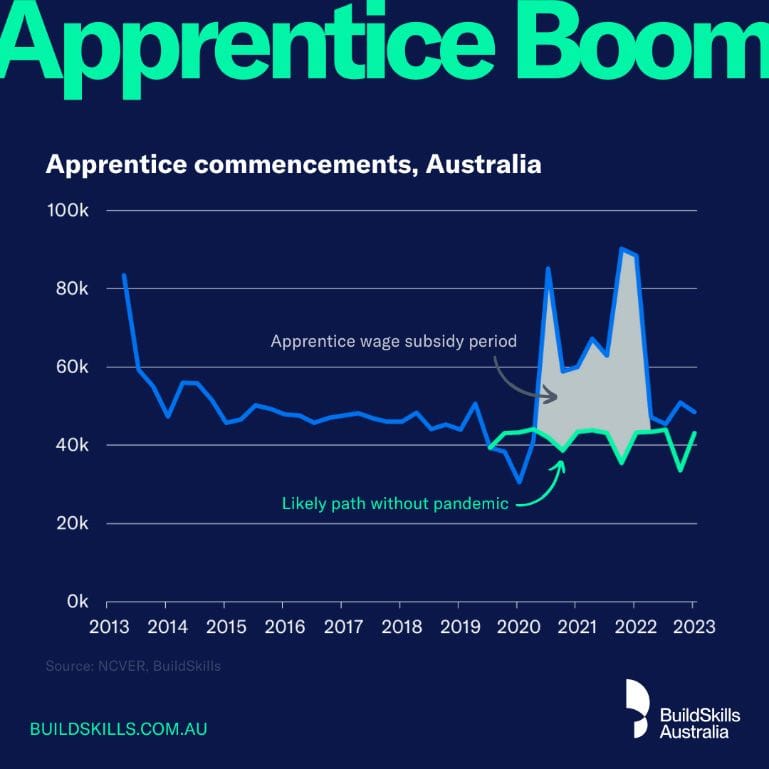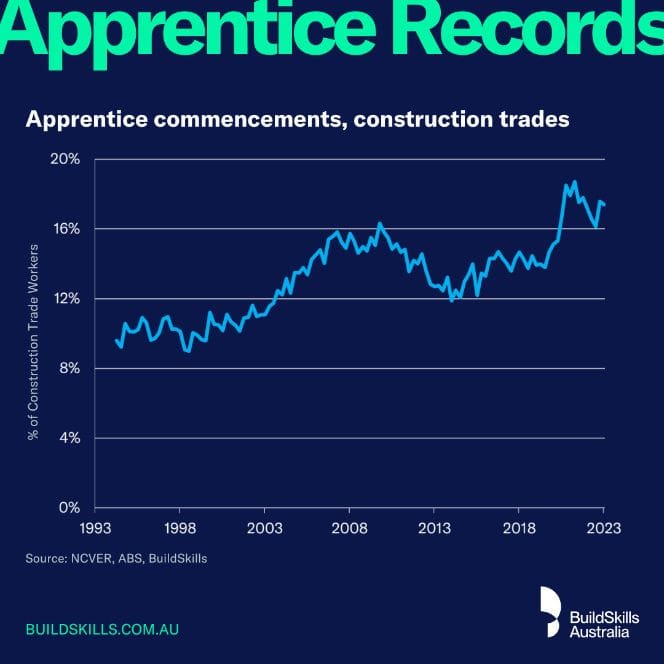
The latest release of NCVER’s Apprentices and Trainees dataset revealed a concerning collapse in apprentice commencements in the 2022-23 financial year.
Or did it?
It is true that apprentice commencements fell sharply over the year – from 77,000 in 2021-22 to under 50,000 the following year.
But let’s remember the boom in 2022 was entirely artificial – the result of very generous apprentice wage subsidies during the pandemic. It should come as no surprise that halving the wage bill leads firms to employ more workers.
After a couple of extensions, the subsidy tap was finally turned off in June 2022. Apprentice commencements promptly and predictably reverted to trend, but not before accumulating a huge surplus of extra apprentices.
Our analysis suggests the scheme led to around 230,000 extra apprentices. This is over-and-above the roughly 290,000 commencements we would have recorded had the subsidy not been introduced.

Many are now asking – should the subsidies have been maintained?
On the face of it, it seems like a reasonable question. If our only objective was to increase the number of people enrolled in apprenticeships, the scheme can only be judged a huge success.
But that success came with a significant price tag. According to the Federal Budget, ending these subsidies will save the public purse around $3 billion. That suggests this scheme alone has accounted for more than half of total federal vocational and industry training expenses.
The key point here is that policy measures cannot be analysed in isolation - Budgets are about trade-offs. There are a finite number of dollars available to the government and every dollar spent on an apprentice is a dollar not spent on a school student or a hospital patient.
The real question we need to be asking is whether these extra apprentice commencements are worth the opportunity cost. Is the ‘normal supply’ of apprentices—i.e. without the scheme—so insufficient that an expensive wage subsidy can be justified? Does the trade-off make sense?
This remains an open question. While some view the apprenticeship system as being in terminal decline, the true picture is less clear-cut. For example, despite consistent commentary about declining apprenticeships, construction trade commencements have never been higher – even without the subsidies.

This of course is not to say there are no pockets of weakness in the system or that other aspects of apprenticeships—such as completion rates—are not of concern.
It is to simply say that the specific nature of the problem is more nuanced than a simplistic ‘apprenticeships-in-decline’ narrative might suggest. If this is the case, we need an equally nuanced policy response. An expensive and blunt wage subsidy may not be the best-and-highest use of public money.
1 All references to ‘apprentices’ in this article include both apprentices and trainees. References to ‘commencements’ include both commencements and recommencements.



